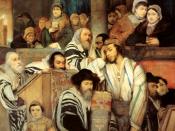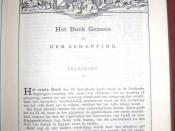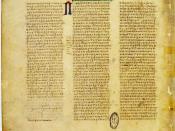Several different materials were used in the writing of the Bible. The Bible was written on papyrus, which is a material that was chosen for its durability. However, papyrus -- though more durable than other materials that could have been chosen -- was still very much a perishable material. As a result, most of the ancient manuscripts have been destroyed. All autographs have been lost for this reason.
Additionally, it is presumed that the scribes, upon copying the scriptures to newer materials, destroyed their original exemplars. Papyrus was commonly used until 2 A.D.
Parchment and Vellum were names given to a more durable material, made from the skins of animals. Ostraca was unglazed pottery and is found in abundance in Egypt and Palestine. Also used were stones, inscribed with a sharp piece of iron, engraved clay tablets, and pieces of flat wood covered with wax.
Different writing instruments were used.
Chisels were used to engrave stones. A metal stylus was used on clay and wax. Ink was a mixture of charcoal, gum, and water.
Books took on different forms. Scrolls were among the first books, later to be followed by Codex book form.
Writing styles included uncial writing, and minuscule writing.
The Pentateuch was divided into 154 groupings in 586 B.C. Fifty years later, it was further sectioned into 54 divisions and 669 segments. The Greeks made divisions around 250 A.D. The oldest division is from about 350 A.D. in the margins of Codex.
The first verse breaks varied from simple spaces to letters or numbers between words. They were not universal in their acceptance. The Latin Vulgate was the first Bible to utilize both verse and chapter divisions in both the Old and New Testaments.
The word, Canon, is a word used to describe a group of books...


